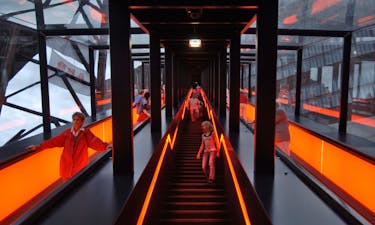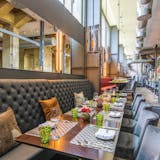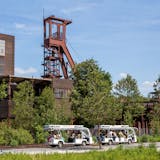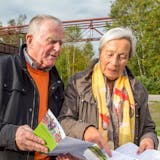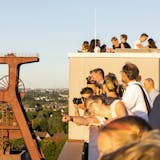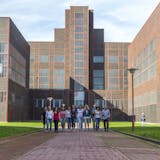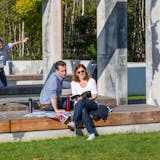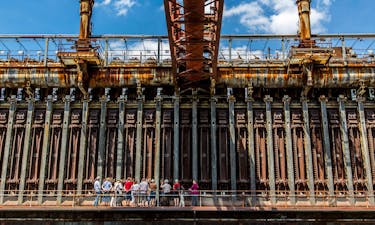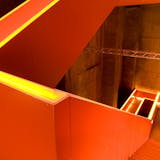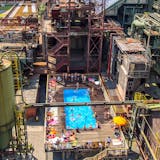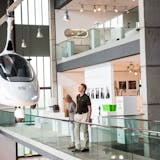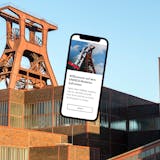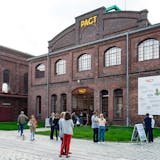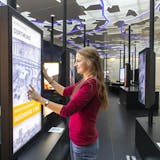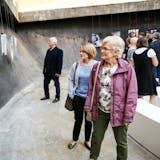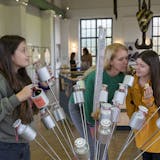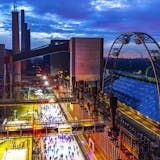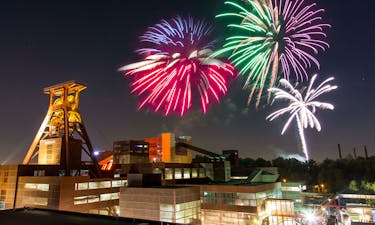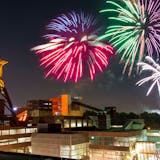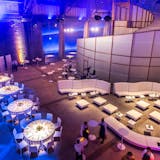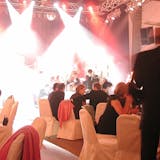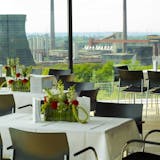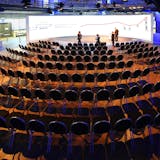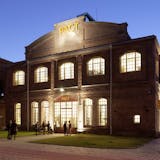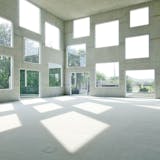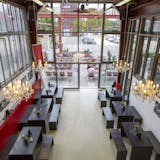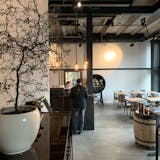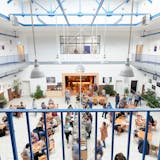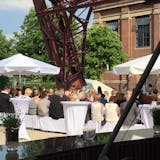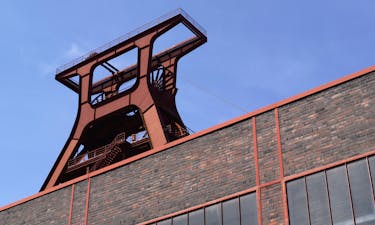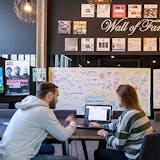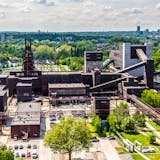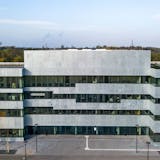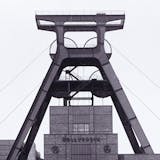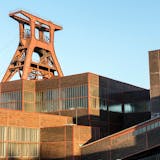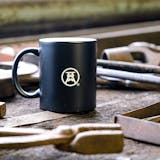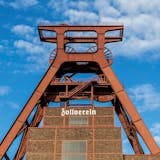
Das Ruhr Museum
The Ruhr Museum
Das Ruhr Museum
Halb im Ernst sprechen die Macherinnen und Macher des Ruhr Museums von ihrem Haus als „Heimatmuseum des Ruhrgebiets“. Dabei ist es so anders. Vor allem – was ist das Ruhrgebiet für eine Heimat? Ein Ballungsraum für mehr als fünf Millionen Menschen, mehr als 50 Städte, aufgeteilt auf drei Regierungsbezirke. Eine Mischung aus Rheinland und Westfalen, verdichtete Lebensräume, Industriesiedlungen und beschauliche Provinz. Seit 2010, pünktlich zum Start ins Kulturhauptstadtjahr im Ruhrgebiet, erklärt das Ruhr Museum auf drei Ebenen Gegenwart, Gedächtnis und Geschichte des Ballungsraumes. Das ehrwürdige Ruhrlandmuseum als Vorläufer brachte Sammlungen ein und ein Team, das sich ganz auf die neue Bleibe einließ. Ob es die fast skizzenhafte Darstellung von Ruhrgegenwart ist aus Ansichten, Durchfahrten, Riech- und Klangstationen auf Arbeit, Freizeit, Bildung. Oder in den dunklen Kohlebunkern das Eintauchen ins Tiefengedächtnis des Landstriches, das lang vor der großen Industrie einsetzt – hier war auch Schauplatz römisch-germanischer Geschichte, verlief der uralte Hellweg. Erbittert wurde gefochten um Vorherrschaft zwischen kirchlichen und weltlichen Herrschern, es gab prosperierende Hansestädte darunter Duisburg, eine bedeutende Hafen- und Universitätsstadt. Erst im Untergeschoss verändert sich das Ruhr Museum zum „richtigen“ Geschichtsmuseum, zeigt eine sozial-, kultur- und naturgeschichtliche Chronik vom postindustriellen Wachstum bis zum Strukturwandel – der übrigens fast schon so lange anhält wie die eigentliche Hochzeit der Ruhrindustrie. In den Jahren seit dem Start 2010 auf Zollverein hat sich das Ruhr Museum auch mit zahlreichen Sonderausstellungen einen Namen gemacht. Auf der Kokerei wurde 2014 der Erste Weltkrieg untersucht, 2017 „Das Zeitalter der Kohle“, im Ruhr Museum gab es erfolgreiche Schauen zu Krupp, zur Popmusik im Ruhrgebiet oder zur Ruhrbesetzung 1923.
The Ruhr Museum
The movers and shakers of the Ruhr Museum speak half seriously of their house as “the local museum” of the Ruhr area. At the same time, it is so different. Above all – what kind of homeland is the Ruhr area? It is an agglomeration of more than five million people and more than fifty cities divided into three administrative districts: a mixture of Rhineland and Westphalia, dense living spaces, industrial residences and a tranquil province. Since 2010, just in time for the start of the European Capital of Culture year in the Ruhr area, the Ruhr Museum has been explaining the agglomeration at three levels: the present, the memory, and the history. The honorable Ruhrland Museum, as a forerunner, brought in collections and a team that was fully committed to the new abode. Whether it is the almost sketchy depiction of the Ruhr’s present from opinions, passages, smell and sound stations at work, leisure or education; or whether it is in the dark coal bunkers, the immersion into the deep memory of the region, which began long before the great industry. This was also the scene of Roman-Germanic history, where the ancient Hellweg ran. There were bitter battles for supremacy between ecclesiastical and secular rulers. There were prosperous Hanseatic cities including Duisburg an important port and University City. Only in the basement does the Ruhr Museum change into a “real” history museum showing a social, cultural, and natural history chronicle from post-industrial growth to the structural change – which, incidentally, has lasted almost as long as the actual heyday of the Ruhr industry. In the years since its launch at Zollverein in 2010, the Ruhr Museum has also made a name for itself with numerous exhibitions. In 2014, the First World War was examined at the coking plant, in 2017 „The Age of Coal“, and in the Ruhr Museum there were successful exhibitions on Krupp, pop music in the Ruhr area, or the occupation of the Ruhr in 1923.







